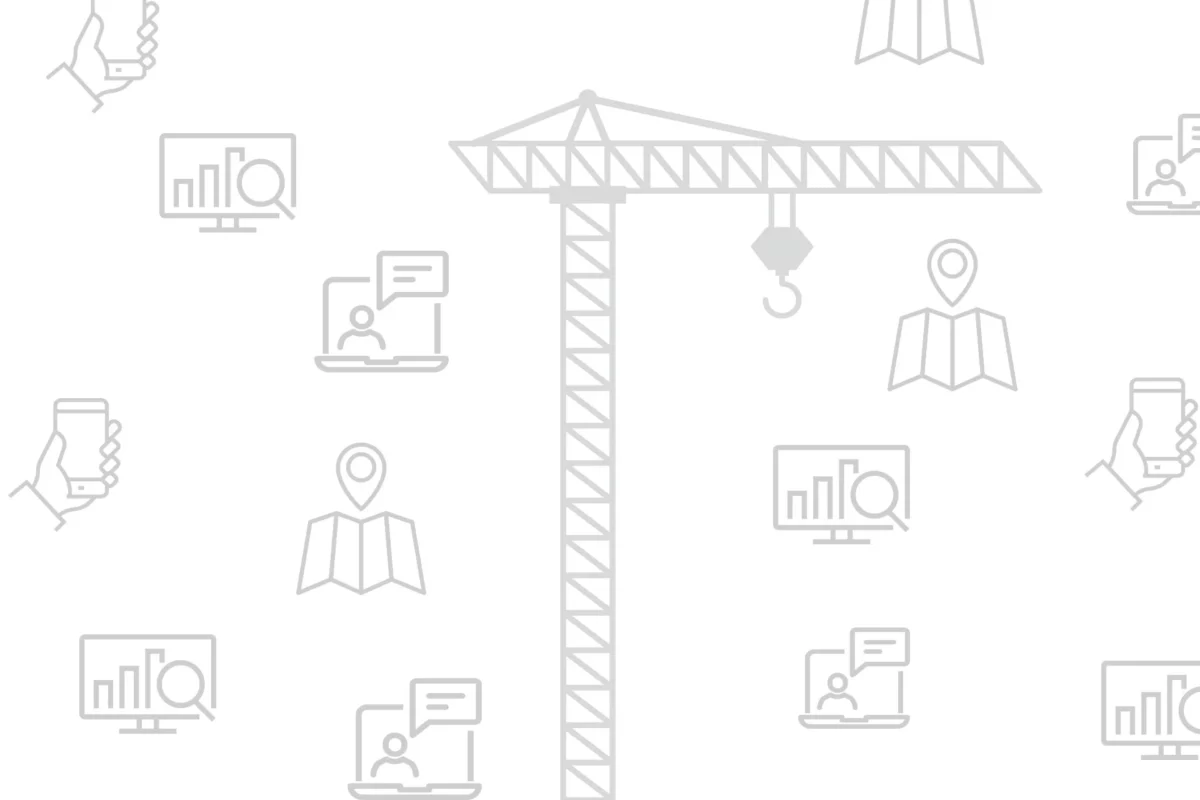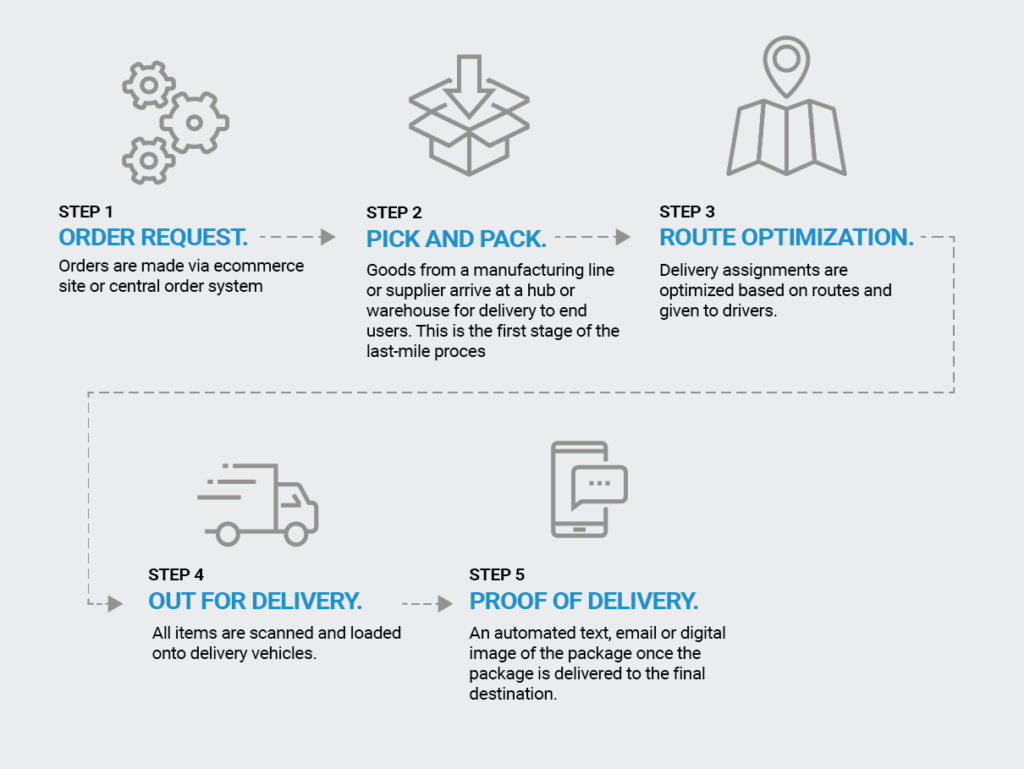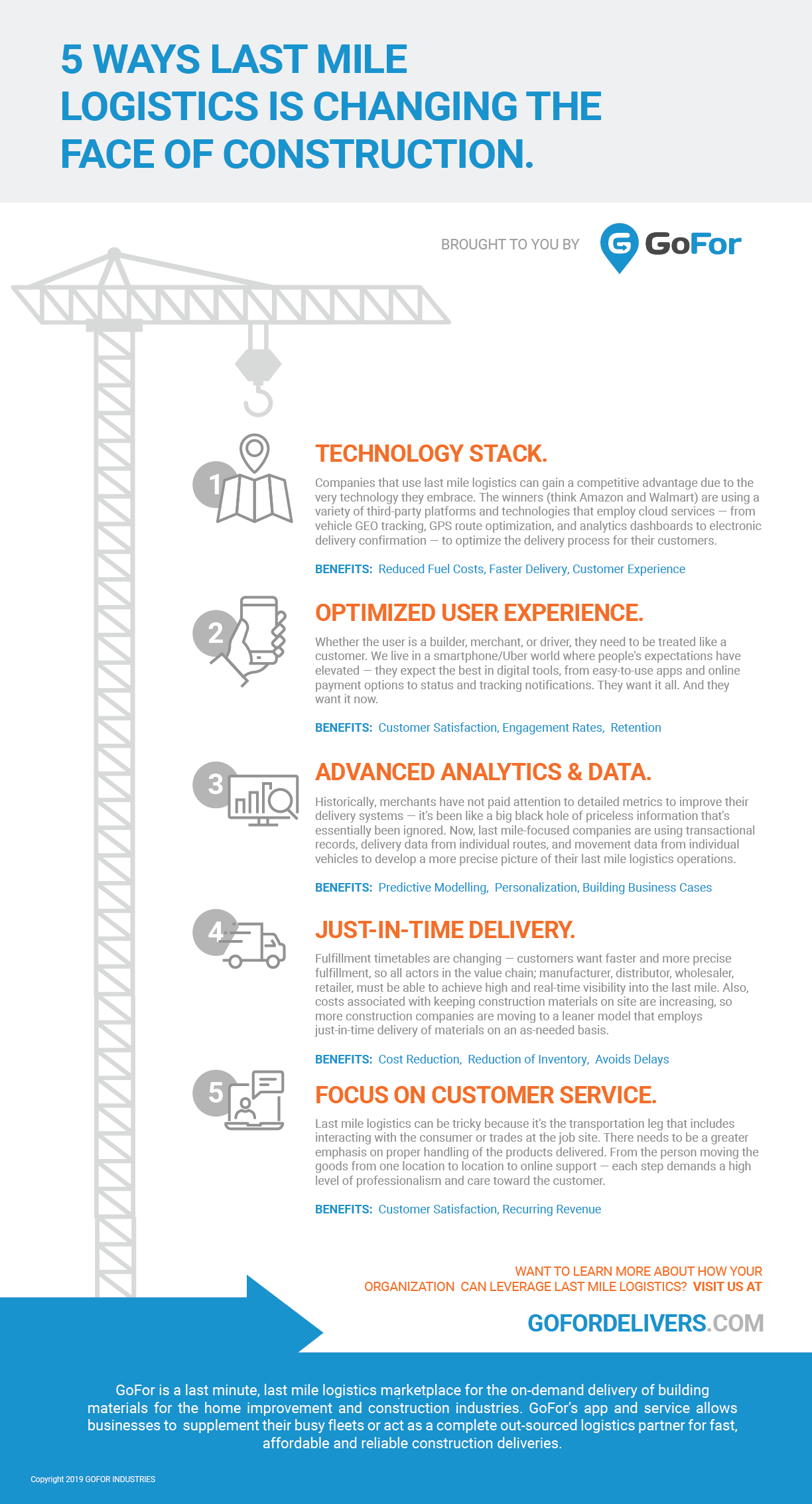5 Last Mile Delivery Trends Transforming the Construction Industry

We live in an on-demand economy — a fact that is changing the way companies do business.
The construction industry is no exception. Consumers have quickly become accustomed to nearly instantaneous delivery, which is driving a competitive dynamic among DIY construction materials merchants like The Home Depot and Lowe’s. They’re following in the footsteps of Amazon with their on-demand capabilities, effectively separating themselves from the competition in an increasingly challenging margin environment.
What is Last Mile Delivery?
In the 1970s and 80s, just-in-time (JIT) manufacturing — a model in which items are created to meet a current demand rather than in surplus or before they’re actually purchased — transformed the underlying economic efficiency of building consumer and industrial products. That same focus on efficiency is now coming to the “built” economy, where general contractors, home builders, and developers are looking for ways to unlock transformational economic benefits by optimizing their supply chains.
Enter the focus on last mile delivery.
“Last mile” refers to the final steps of the delivery process from a distributor, retailer, or facility to the consumer or job site. This does not technically refer to the last mile of the delivery process, but rather the final leg (sometimes a trip of up to 100 miles.)
Last mile logistics focuses on local carriers to deliver products as quickly as possible with an eye toward creating a seamless, full-service experience for customers.
A Closer Look at Last Mile Process:

How the Construction Industry Can Leverage Changes in Last Mile Delivery
Ultimately, all the investments retailers devote to product development, sales, marketing, design-in specification, trades training and customer engagement will amount to very little if they cannot get their goods quickly, cost-effectively, and safely into the hands of waiting consumers or tradespeople.
Shipping logistics represents the final, and arguably most important factor, in the equation for success for B2B and B2C merchants serving the construction and industrial use verticals.
Here are five trends businesses need to consider when thinking about last mile delivery:
- Technology Stack. To make last mile deliveries run smoothly, businesses need to update their last-mile delivery ecosystem. New technological innovations must be integrated into the core of every process — and companies can gain a competitive advantage based on the technology they embrace. The winners (think Amazon and Walmart) are using a variety of third-party platforms and technologies that employ cloud services — from vehicle GEO tracking, GPS route optimization, and analytics dashboards to electronic delivery confirmation — to optimize the delivery process for their customers.
Benefits: Reduced Fuel Costs, Faster Delivery, Improved Customer Experience - Optimized User Experience. Whether the user is a builder, merchant, or driver, they need to be treated like a customer. We live in a smartphone/Uber world where people’s expectations have elevated — they expect the best in digital tools, from easy-to-use apps and online payment options to status and tracking notifications. They want it all. And they want it now. Benefits: Customer Satisfaction, Engagement Rates, Retention
- Advanced Analytics and Data. Historically, merchants have not used detailed metrics to improve their delivery systems — it’s been like a big black hole of priceless information that’s essentially been ignored. Now, last mile-focused companies are using transactional records, delivery data from individual routes, and movement data from individual vehicles to develop a more precise picture of their last mile logistics operations.
Benefits: Insights and Trends - Just-in-Time Delivery. Fulfillment timetables are changing. Customers want faster and more precise fulfillment, so all actors in the value chain — manufacturer, distributor, wholesaler, retailer — must be able to achieve real-time visibility into the last mile. Also, costs associated with keeping construction materials on site are increasing, so more construction companies are moving to a leaner model that employs just-in-time delivery of materials on an as-needed basis.
Benefits: Cost Reduction, Avoids Delays - Greater Focus on Customer Service. Last mile logistics can be tricky because it’s the transportation leg that includes interacting with the consumer or trades at the job site. There needs to be a greater emphasis on proper handling of the products delivered. From the person moving the goods between locations to online support, each step demands a high level of professionalism and care toward the customer.
Benefits: Customer Satisfaction
Are You Focused on Last Mile Logistics?
Exciting things are happening in the world of last mile logistics, and the technology leveraged to push the boundaries of last mile and same-day delivery is growing in complexity and scope. Retailers and suppliers must take note of these trends and make changes to the way they deliver their products. If they don’t, they face the possibility of losing their competitive advantage — especially when e-commerce giants are moving toward almost-instant delivery.
But when we’re talking about last mile logistics for the construction industry, there are additional challenges to consider. First, the operating costs and capital expenses that come with owning, maintaining, and operating your own fleet of delivery vehicles are high. Finding and retaining dependable drivers also takes time and money.
So, does your company have a plan to navigate the complex landscape of last mile logistics?
At GoFor, we recognize the challenges facing manufacturers, distributors, merchants, and logistics providers in the last mile. We’ve built and are growing a software platform, team, and set of business processes that instantly modernizes their last mile delivery processes, driving material OPEX and CAPEX savings while providing deep and real-time insights in a stand-alone model or fully integrated as an extension of their ERP platforms at the EDI/API layer.
Through our fleet of professional delivery vehicles and partnerships and our easy-to-use mobile and web apps, we help merchants, distributors, and retailers understand their operations and costs — vehicle types, peak times of day, service areas — so they can determine which areas are working well and those that need improvement.
Our business and software platform allows our customers to be highly agile, offer rapid delivery to their customers, make the most of their data insights, lower their expenses, and, ultimately, make logistics a revenue center — not a cost of business.

